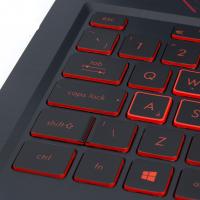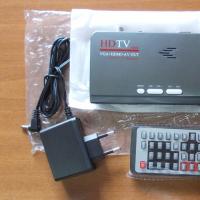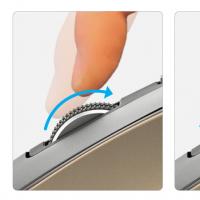How to see a flash drive on a MacBook. Opening a flash drive on a MacBook
In the modern world, everyone knows what a flash drive is and uses it, if not daily, then very often. Sometimes flash drives have to be formatted in order to get a completely clean medium and do it quickly, without deleting files and folders one by one.
To get a blank flash card in Windows, just click the “Format” item in the context menu and wait for the process to complete, but on Mac OS there is no this item in the context menu. As a result, new users of Apple's operating system often have a question: how to format a flash drive on a Mac?
Doing this is not much more difficult than on Windows, and these instructions will convince you of this.
To get a formatted flash drive, you don’t need to install any additional programs or perform complex actions - everything is much simpler. The algorithm of actions is as follows.
1. Connect the flash drive to a computer running Mac OS
2. Find and open the program "Disk Utility". This program is installed by default on all Mac OS computers. To do this, press the keyboard shortcut ctrl+space and in the Spotlight pop-up window, start typing the title "Disk Utility" or just open this program via Finder -> Programs -> Utilities -> Disk Utility.


3. In the Disk Utility program window that opens, find your flash drive on the left. On the right side, open the tab "Erase", select the file system format and the name of the flash drive and click the button below "Erase".

4. Confirm your intention to format the flash drive in a pop-up message.

That's all. As a result of these steps, your flash drive is completely formatted and ready for use again.
No matter what cloud technologies you use, sometimes you still need a very ordinary flash drive, with which you can transfer data from one computer to another and back.
This is quite difficult to do with the MacBook Pro 2016+ (MacBook 2015+), because Apple engineers replaced the usual USB-A with Type-C. But you can’t buy a regular C-type flash drive due to backward compatibility issues with other devices. Problem.
I found easy way out, which turned out to be as inexpensive and convenient as possible.
Branded USB-C - USB-A flash drives are quite expensive

Of course, the most obvious solution in this case is to purchase a branded universal flash drive for USB-C and USB-A. And top manufacturers offer plenty of similar solutions.
One of the smartest options I considered was the Kingston DataTraveler microDuo 3C flash drive. But its cost starts from 1 thousand rubles, which seemed enough to me expensive purchase.
But the most annoying thing is that, like many of you, I already have dozens of different flash drives that I bought, received as a gift, and even just found by accident earlier.
Do we really have to just take them all and throw them away? As you can see from the photo, no!…
We turn a regular USB-A flash drive into USB-C for cheap

To make a universal flash drive for the new MacBook, I took a minimal-sized drive from SanDisk, which used to stick out in my radio in my old car.
Besides this, I needed the simplest USB-A to USB-C adapter in the same compact format. My colleague Yuri Andreev talks about a good option in detail.
There are plenty of options on AliExpress. I bought an adapter for 100 rubles, Yura came across a similar one for 70. Look, I advise you to just pay attention to support for the USB 3.0 standard.
And don’t take those that are outlined with left logos, they look ugly.
Unobvious advantages, if you don’t look at the price

As a result, I got a compact universal flash drive that is always lying around in my backpack - just in case of emergency. As I said above, sometimes you still need it.
But, unlike a proprietary solution like the Kingston DataTraveler microDuo 3C, this has an obvious advantage - in addition to a flash drive, you have always have an adapter with you.
By and large, most of the other bulky adapters (like this one) now you don’t have to carry with you at all. To connect anything to a new MacBook via USB-A, this solution is enough.
However, my “incredible invention” still has some drawbacks.
Disadvantages of the solution that I finally came up with

The adapter I use is USB-A doesn't fit all the way. It turned out to be smaller than necessary, so not only the top of the flash drive sticks out a little, but also part of the “pin”. Strange.
And the flash drive in the adapter is not held 100% tightly. In the backpack, the “father” does not fly out of the “mother”, but in the hands it seems that the design is not reliable enough.
And lastly, if someone needs to reset something from their USB-A, it is better to give them a flash drive without an adapter. And she is very small and can easily get lost.
But in total I was more than satisfied, and I recommend a similar solution to you. Try it.
To ensure maximum compatibility, manufacturers use two file systems in flash drives: FAT32 and ExFAT. The MacBook can work with both out of the box. A small problem is NTFS, a proprietary Microsoft format. With it, Apple computers work in read-only mode by default.
In this material, I tell you how to set up a MacBook for convenient work with external drives.
Flash device display options
File operations are performed on macOS using the Finder. You can also configure where the connected USB drive will be displayed. Only in the file manager, on the desktop, or in both places at the same time.
- After connecting the external drive to the USB port, open Finder. In the side menu, the flash drive is highlighted with a frame, and next to it an arrow shows the safe disconnection symbol.
The connected flash drive is highlighted in the Finder sidebar
- To configure display parameters, switch the system language to English. Then, with the file manager window open, press the “Command” and “,” buttons to open the settings. The same result can be achieved by opening the “Finder” menu on the top panel and selecting the item marked with a frame.

Open the macOS file manager settings
- The first tab, “Basic,” contains desktop settings. If you want the connected flash drive to be displayed on it as an icon, check the box next to the “External drives” line.

Enable display of the connected flash drive on the desktop
- Switch to the “Side Menu” tab. Here you can configure the type of file manager. To make the external drive appear in the sidebar, check the box shown in the “Places” block.

Setting up the display of external drives in the side menu of the file manager
File system check
When using FAT32, the maximum writeable file size is limited to 4 GB. Therefore, before working with a flash drive, it is important to know how it is formatted.

Working with NT File System
With the proprietary NTFS format developed and used by Microsoft for Windows OS, the MacBook out of the box can operate in read-only mode. In other words, by connecting such a drive, the user can copy data from it, but cannot write it.

Finally
It is safe to say that the user does not experience any discomfort when working with external media on a Mac. Mac understands popular formats out of the box, and NTFS for a flash drive is more exotic than regular practice.
Post Views: 230
Flash cards are now the most popular type of removable media. This is not surprising since they are small in size and large enough to load the necessary files into them. But in Mac OS, working with them works a little differently than in Windows. New users may get confused, so today we will tell you how to format a flash drive on a MacBook, as well as about other operations.
How to open a flash drive on a MacBook
- First, you should figure out how to connect a flash drive. It will need to be inserted into a special connector.
- After the removable drive is in the USB port, the user needs to go to the finder window, which is where they can view it.
Sometimes situations happen that after connecting, the device does not appear in the finder tab. In this case, you will need to go into Disk Utility. This can be done through the menu of all utilities.
If the flash drive is not displayed even there, then the problem may be a failure of the drive itself, or there is a problem in its format. The fact is that Mac OS cannot read the NTFS format. At the same time, most manufacturers use this format for their devices.
Unfortunately, in this case, you cannot change the format through a device with an Apple operating system. To do this, you will need to find a computer that runs Windows.
How to remove a flash drive from a MacBook

Most Windows users are accustomed to simply unplugging the flash drive from the connector. But it is not advisable to do this, since such a disconnection may result in data loss. This is due to the fact that the system creates an image of the drive in order to work with it. If you remove the drive, but do not close the image, unpleasant situations may occur, including the flash drive being completely erased.
In order to safely disable it, there are a large number of ways, but there is the simplest one, which we will tell you about. To do this, just press the key combination command + E. When you press this, you can safely remove the flash card.
How to format
Formatting removable media is a fairly common phenomenon. Thanks to this, you can quickly erase all files, as well as clean it of residual program debris. IN Mac OS formatting a flash drive It's done a little differently than on Windows, but not much more complicated.
- First, you will need to open Disk Utility. This can be done in several ways, but the easiest is to search through spotlight. To do this, simply press CTRL + Spacebar, then enter the name of the disk utility.
- In this utility you need to find your flash drive. There will be an “erase” button on the right. This tab is the formatting window. Here you can select the desired format.
- When you have selected all the desired options, simply click on the “erase” button again.
- A confirmation window will appear asking you to agree to the action.
It is important that formatting erases all files. If there is something on the flash drive that you need to save, it is better to copy it to your laptop so as not to lose this data.
Disks and floppy disks have long been replaced by flash media that allow you to store and transfer information. We will tell you how to open a flash drive on a computer on various operating systems and devices.
Step-by-step instruction
Insert the flash drive into the USB port. It is usually located next to the microphone and headphone jacks. After that, click the “Start” button and go to “My Computer”. This can also be done from the desktop. Among all the other disks, you will see that a new one has appeared, for example, “KINGSTON (F)”. It may be called differently depending on how the flash drive is renamed. Left-click on the image of the removable disk, after which its contents will open in front of you. This is how you open a flash drive on the Windows operating system.
How to open a flash drive on Linux OS?
Removable media opens the same way on almost all operating systems. However, if you are using a Linux system, certain difficulties may arise.
The Flash disk can be opened from autorun, or go to computer://, where you need to select the device to open. If the removable media is not detected, download and install drivers that will support the operation of such devices. After installation, you need to restart the computer and open the flash drive in some file manager.
How to open a flash drive on Android and MacBook?
The instructions are relevant for those who use a tablet or Android phone. The first step is to install a file manager. This can be the X-plore File Manager application or the ES File Explorer program. With their help you can log into the flash drive.
Are you a MacBook owner? Then you will open the removable disk as follows: connect the flash drive to any USB port, after a few seconds it will appear on the desktop screen as an icon. Click on it twice, and the contents of the files recorded on this disc will be displayed in front of you.
If you are wondering how to open a hidden flash drive, then remember the sequence of actions: open the removable drive, select the “Tools” section on the toolbar, then “Folder Options”, “View”, “Advanced Options”. Find the line “Hide protected system files” and uncheck the box, and in the line “Show hidden files and folders”, on the contrary, you need to check it. Save your changes.



